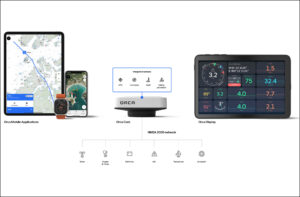Years ago while researching harbor protection in Cuba I came across NOAA’s nifty hurricane and tropical storm historical tracking tool. It revealed a large swath of the Cuban coast that has relatively free of bad storms since tracking commenced about 150 years ago.

For an explanation of why the above area is a seemingly safe haven, read this story about a hurricane hole in the Dominican Republic that shares the same essential geographic and climatological conditions. The technical analysis was provided by forecaster Chris Parker of the Marine Weather Center.

All these depictions show all storm tracks since 1851, but you can narrow down the search in a number of ways.
NOAA says
Tracking and understanding hurricanes is important to scientists and climatologists who seek to find patterns and variability as a piece in understanding climate change. For emergency management officials and and those who live in a possible hurricane strike area, it is imperative to study and be aware of the patterns and possibilities in order to prevent loss of life.
How were these data collected?
Data for more than 6,000 global tropical cyclones are included in the IBTrACS database, spanning the last 150 years. For each storm, position, sustained winds, and minimum central pressure data points are collected.
What can I do with these data?
This site gives users a way to select, display, and share historical hurricane tracks and other information about topical cyclones recorded by various methods. Using extensive selection and sorting criteria, users can display information from individual storms or the set of storms that crossed a specified location. Wind speed and pressure readings are also available. By “sharing” search results, the track and data can be saved to a link.
How do I use the site?
Use the pull-down menus to set options:
- Location
- Storm Name/Year
- Ocean Basin
Once options have been set, further refinements can be made to the selections to give specific storm data.







